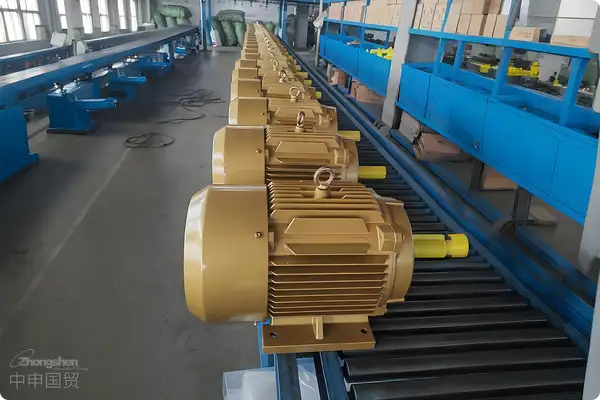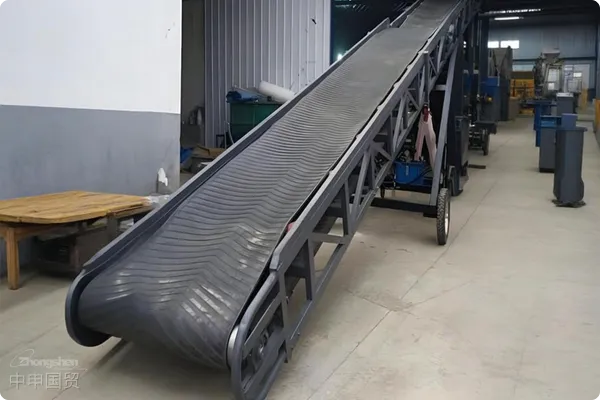- Shanghai Zhongshen International Trade Co., Ltd. - Two decades of trade agency expertise.
- Service Hotline: 139 1787 2118

Compulsory certificationWhat Certifications Are Required for Machinery Equipment? Complete Analysis of Key Standards
I. Core Requirements of Russias Technical Regulation System
Russia imposesequipment. For example, Indonesia has the SNI certification, Thailand has the TISI certification, and the Philippines has the BPS certification. It is necessary to confirm in advance the equipment voltage (such as 380V/50Hz in Thailand), the compatibility of the CE certification, and the proof of environmentally friendly materials.Implement a strict technical access system, enterprises need to focus on the following two major systems:
- GOST R certification system(GOST R): Applicable to mechanical equipment not covered by the Eurasian Economic Union technical regulations, covering basic requirements such as mechanical safety, electromagnetic compatibility, and material strength
- TR CU/EAC Certification: For products listed in the Eurasian Economic Union unified technical regulations (e.g., TR CU 010/2011 Machinery Safety Regulations), mandatory EAC marking is required
II. Specific Standards Machinery Equipment Must Comply With
1. Basic Machinery Safety Standards
- GOST EN 60204-1-2018 Safety requirements for electrical equipment of machines
- GOST 12.2.003-2018 General safety standards for production equipment
- ГОСТ ISO 12100-2013 Basic design principles for mechanical safety
2. Additional Requirements for Special Equipment
| Equipment type | Explosion - proof certification |
|---|---|
| Pressure vessels | TP TC 032/2013 |
| Explosion-proof equipment | ГОСТ IEC 60079 series |
| Lifting machinery | TR CU 010/2011 Annex 5 |
3. Environmental and Energy Efficiency Standards
- GOST R 54122-2010 Mechanical vibration measurement standards
- GOST R 51388-2019 Energy efficiency rating labeling
- TP TC 037/2016 Restriction of Hazardous Substances Directive
III. Key Stages of Certification Implementation Process
- Product classification confirmation: Determine applicable regulations list through HS codes
- Includes risk assessment reports, performance test data, clinical evaluation reports, etc.: Including design drawings, material certificates, risk assessment reports (requires Russian notarization)
- Laboratory testing: Complete type testing in Russian accredited laboratories
- Production audit: On-site assessment of the quality management system
- Certificate registration: File through the FSA (Federal Accreditation Service) official website
IV. Guide to Avoiding Common Compliance Risks
- Marking specifications: EAC mark height must not be less than 5mm and must be permanently labeled
- Document validity: Single-batch certificates are only valid for the current customs clearance, while series product certificates are valid for 5 years
- Update requirements: Product design changes require re-submission of technical documents for review
Expert advice: It is recommended to start the certification process 6-8 months in advance, with special attention to the format specifications of Russian technical documents (GOST 2.104-2006)
V. Latest Regulatory Updates (2024 Edition)
- Expanded mandatory certification scope for welding equipment (TR CU 010/2011 amendment)
- Digital certification system launched: Electronic applications can be submitted via the GosUslugi platform
- Carbon footprint declaration requirements: Carbon emission grading system for heavy machinery to be implemented from 2025
Mastering the key requirements of the Russian technical standards system and planning compliance in advance will effectively reduceEquipment ExportMitigate risks and enhance competitive advantages in the Russian market. It is recommended to establish cooperation with local certification bodies to track regulatory updates in real time.
Related Recommendations
Category case
Contact Us
Email: service@sh-zhongshen.com
Related Recommendations
Contact via WeChat

? 2025. All Rights Reserved. Shanghai ICP No. 2023007705-2  PSB Record: Shanghai No.31011502009912
PSB Record: Shanghai No.31011502009912









